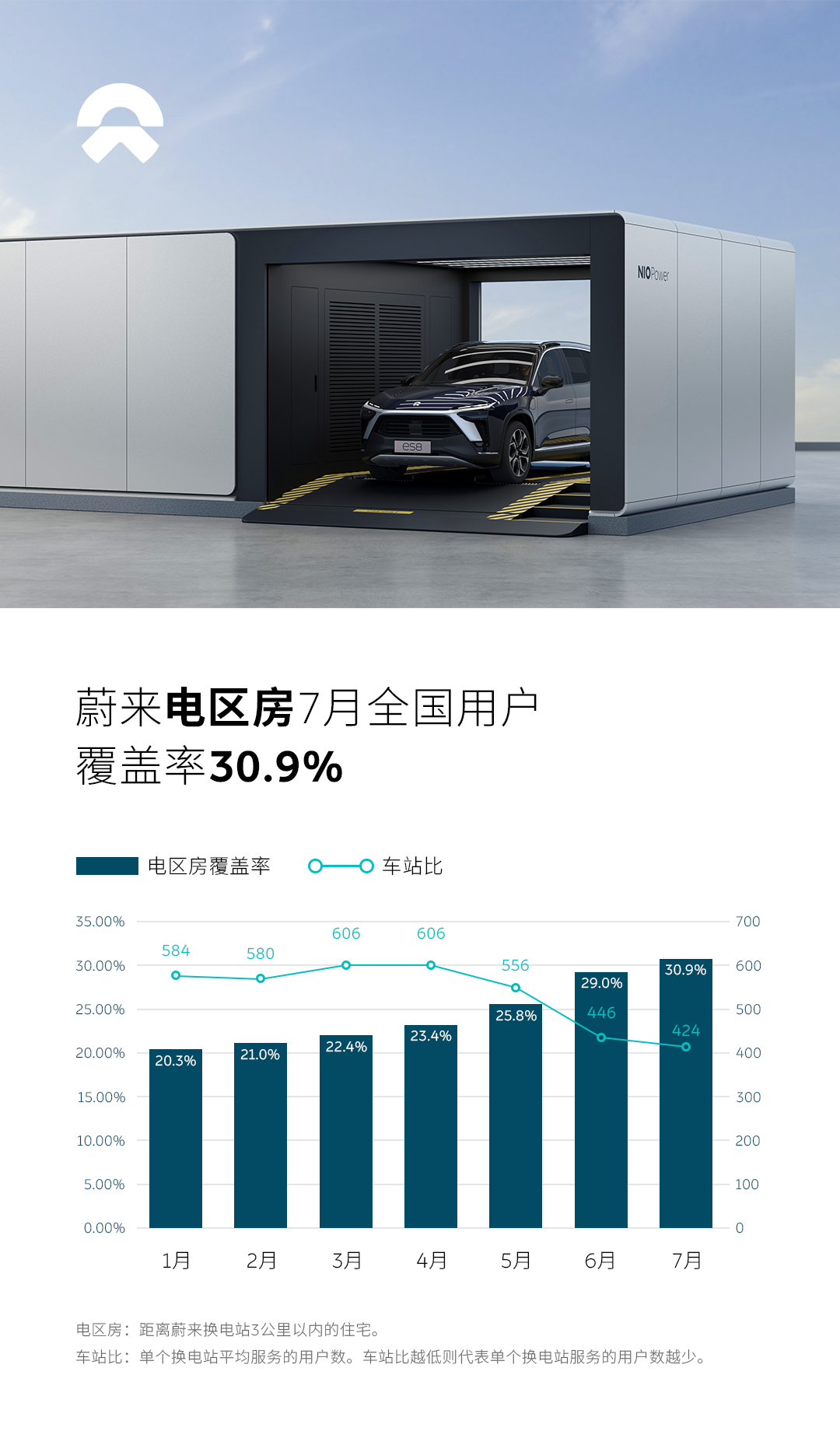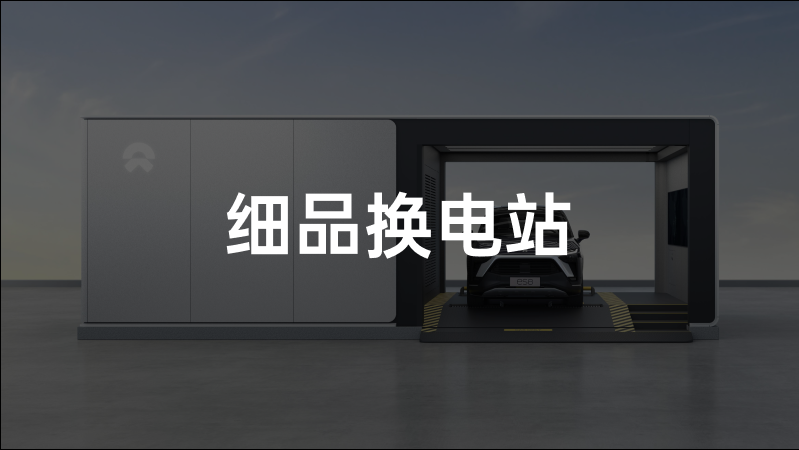As pure electric vehicles become more prevalent, recharging experience has become one of the most concerning issues when using an electric car. We are used to the refueling process at traditional gas stations, which can be completed in a few minutes. Currently, the closest experience to a gas station is NIO’s battery-swapping station. Recently, NIO signed a strategic cooperation agreement with Sinopec and plans to build a large number of second-generation battery-swapping stations.
In addition, the 2020 national new energy vehicle subsidy policy specifically recognizes the vehicle-electric separation mode based on battery-swapping technology. Electric vehicles with a price of over 300,000 RMB must have battery-swapping capability to be eligible for purchase subsidies, and currently only NIO has this technology. In the 2020 Two Sessions Government Work Report, battery-swapping stations were included in the scope of “new infrastructure.”
As a crucial step in NIO’s charging strategy, is the battery-swapping station really as good as advertised? The best way to find out is to try it in person.

Is the battery-swapping experience better than refueling?
If there is an electric vehicle brand that can recharge near one’s home in the time it takes to refuel a traditional car, and also provides intimate services such as filling the windshield wiper fluid, inspecting the vehicle, and inflating the tires, and all for free, wouldn’t it be an even better experience than refueling a gasoline car?
When using a first-generation battery-swapping station, if the weather is too hot, too cold, or raining, there is no need to worry, as some stations provide an ES8 as a customer waiting lounge. During the few minutes of the battery-swapping process, customers can sit in the lounge and relax.
In the past, all passengers had to step out of the car during the battery-swapping process, but now with the second-generation swapping station, it is a completely consistent experience with refueling, where passengers can stay in the car while the battery is swapped.
Battery-swapping has been achieved, but it’s not perfect yet
Advertised as 3 minutes, actually over 5 minutes
When the second-generation battery-swapping station was released, it was advertised that the process could be completed in 3 minutes, bringing back the refueling experience for electric vehicles. However, we found that the actual time is around 4 and a half minutes, plus the time it takes for the automated parking process, which takes about 5 and a half minutes to complete. This is slightly longer than the advertised 3 minutes. We have learned that the swapping speed can be adjusted to fast, medium, or slow, and to ensure a low failure rate during the swapping process, the stations generally operate at medium speed.
Currently, the success rate of automated parking cannot reach 100%. This failure does not refer to collisions during the automated parking process, but rather the car not being parked completely in the swapping position. In this case, attendants manually park the car. Undoubtedly, if the software malfunctions, the time cost of battery-swapping will increase accordingly.
This is also why there are still 1-2 staff members present at the second-generation (2G) battery-swapping stations, even though they claim to be unmanned. After all, the battery-swapping station has not yet reached a truly mature stage, and minor accidents will still occur unintentionally. Once, at a first-generation (1G) battery-swapping station, due to a vehicle software upgrade issue, there was a problem with the vehicle being unable to shift gears and leave after the battery swap, causing the owner to be delayed for nearly three hours before it could be resolved. In addition, even after the 2G battery-swapping station confirms the battery has been swapped on the vehicle, the battery-swapping staff still needs to perform a secondary confirmation at the station. The automatic battery-swapping permission has not been fully opened yet.
It is worth noting that the 2G battery-swapping stations that support only one-way automatic parking may support two-way automatic parking by the end of this year.

Hard to find NIO battery-swapping station in Shanghai downtown area
Until now, there are no NIO battery-swapping stations within the inner ring of the elevated highway in Shanghai. According to insiders, there are several obstacles to building a NIO battery-swapping station within the inner ring.
-
There are too many subway lines in the city center, and the foundation is relatively old. When building a NIO battery-swapping station, it is necessary to dig down about 70 cm, which poses some difficulties. In addition, the country has not yet issued clear standards for the construction of battery-swapping stations. Battery-swapping stations with high current and power are not easy to deploy in the city center.
-
The only Taikoo Hui battery-swapping station in the inner ring of Shanghai was also evacuated due to fire safety issues, which means that there will be no more battery-swapping stations in the inner ring of Shanghai in the short term.
Alternating between first and second-generation battery-swapping stations may cause problems
Some car owners have reported that there is a chance that screws may not be removed when alternating between first and second-generation battery-swapping stations. In fact, the tightening torque of the second-generation battery-swapping station equipment is much larger than that of the first-generation, which is the root cause of the problem. Therefore, there is a certain probability that screws cannot be removed when returning to a first-generation battery-swapping station after swapping at a 2G battery-swapping station. At this time, manual removal of the screws is required, but NIO is already adjusting the tightening torque of the 2G battery-swapping station to match the first-generation station.
It is also worth adding that NIO’s battery is fixed by ten bolts in total. Each bolt can provide one ton of support force, which means that theoretically one bolt can fix the entire battery pack. Therefore, the reliability of the battery installation can be trusted, and NIO will also provide customers with vulnerable parts for free when swapping batteries.
What can be done at a gas station may not be possible at a battery-swapping station.The swapping station will suspend operations during extreme weather conditions, and during a recent typhoon in Shanghai, almost all swapping stations were impacted. This was due to concerns of rainwater entering the underground equipment of the swapping station and causing safety hazards.
While a gas station can refuel multiple vehicles simultaneously, a swapping station can only swap batteries one car at a time, so there is no way to know if there will be an available swap spot upon arrival. Even if a user calls the swapping station beforehand, they will still receive the same response: “You can come and see for yourself. We cannot accurately tell you whether there will be an available swap spot nearby until you place an order.” Therefore, the estimated battery quantity displayed in the system has limited reference value. In situations where waiting time is long, charging is indeed more time-saving.
Users also have high expectations for swapping stations. Currently, when all car models use second-generation swapping stations, the entire vehicle power supply, including the 12V car battery, is cut off during the swapping process. This means that users cannot roll down the window or turn on the air conditioner during the swapping process, which makes the experience unbearable in extreme hot or cold weather. This is also why some users prefer to go to first-generation swapping stations instead of second-generation ones. Although gasoline cars cannot turn on the air conditioner during refueling, users expect more from electric cars, as they are capable of turning on the air conditioner and entertainment system during charging. Many people speculate that this pain point can be resolved by improving the car battery in the future.
Despite the criticisms, there are still many advantages to swapping stations. During NIO Power Day, NIO introduced the concept of “Battery as a Service.” By 2025, 90% of NIO users will live within 3 km of a swapping station that acts as a personal charging station. NIO is also collaborating with Sinopec to promote more swapping stations.
 I often encountered a situation when using the first-generation swapping station that the available battery had been replaced by the user who arrived earlier at the destination. If I insisted on swapping the battery, I had to wait for the compartment to be fully charged or change to another swapping station. However, with the launch of the second-generation swapping station and the downward trend of the number of vehicles per station, this situation has become rare in my actual experience. In short, it is difficult for us to have range anxiety when the efficiency and coverage of energy supplementation are improved. It is just like driving a fuel-powered car, where the scarcity of gas stations and long queues at gas stations can also cause range anxiety.
I often encountered a situation when using the first-generation swapping station that the available battery had been replaced by the user who arrived earlier at the destination. If I insisted on swapping the battery, I had to wait for the compartment to be fully charged or change to another swapping station. However, with the launch of the second-generation swapping station and the downward trend of the number of vehicles per station, this situation has become rare in my actual experience. In short, it is difficult for us to have range anxiety when the efficiency and coverage of energy supplementation are improved. It is just like driving a fuel-powered car, where the scarcity of gas stations and long queues at gas stations can also cause range anxiety.
What surprised me was that during the battery swapping process at the second-generation swapping station, the staff proactively helped me add glass water and cleaned the leaves from the wiper slot. This considerate service experience can generate spontaneous praise from users.
As a user enterprise, the NIO swapping station not only provides users with the fastest energy supplementation method currently available in the market but can also add glass water and inflate tires for the vehicle when needed, which is comparable to the Haidilao in the auto industry.
In addition to providing users with a novel BaaS purchasing method before buying a car, NIO’s swapping model can also guarantee the lifespan of the vehicle battery in the future. Rechargeable, swappable, and upgradable, NIO can not only provide fast battery swapping but also replace the battery with a new one or upgrade the existing battery to a larger capacity, ensuring that the price of the used car is not too low and eliminating users’ concerns about battery lifespan attenuation. Moreover, NIO claims that its battery can match most pure electric vehicles. Will swapping stations with automatically adjustable wheelbase have more possibilities in the future?
This article is a translation by ChatGPT of a Chinese report from 42HOW. If you have any questions about it, please email bd@42how.com.
